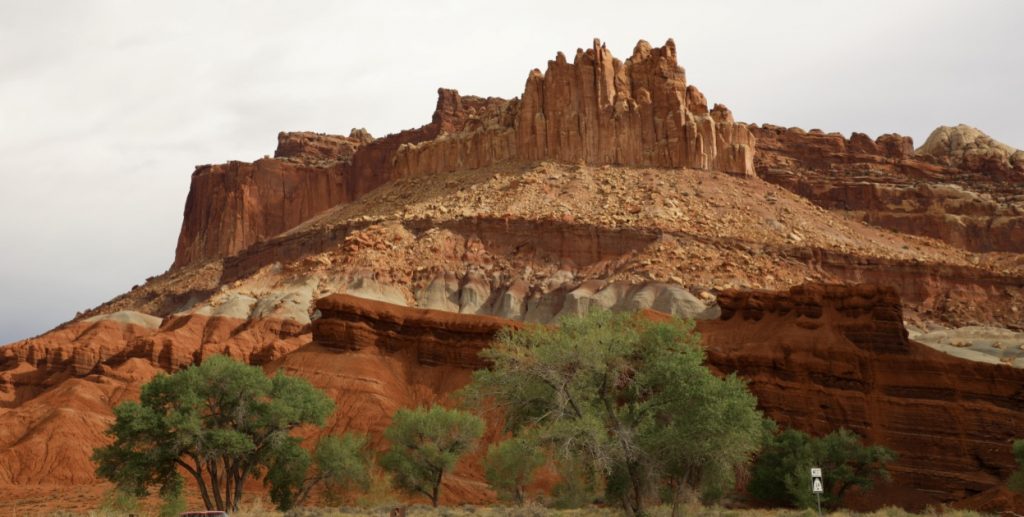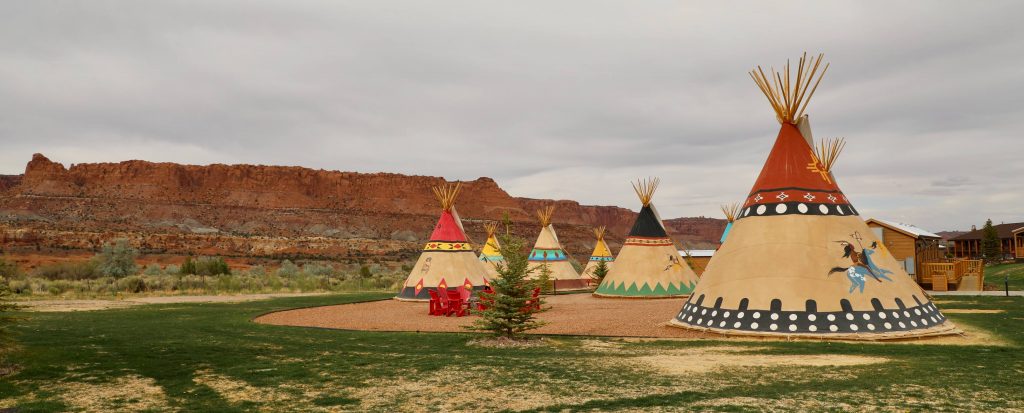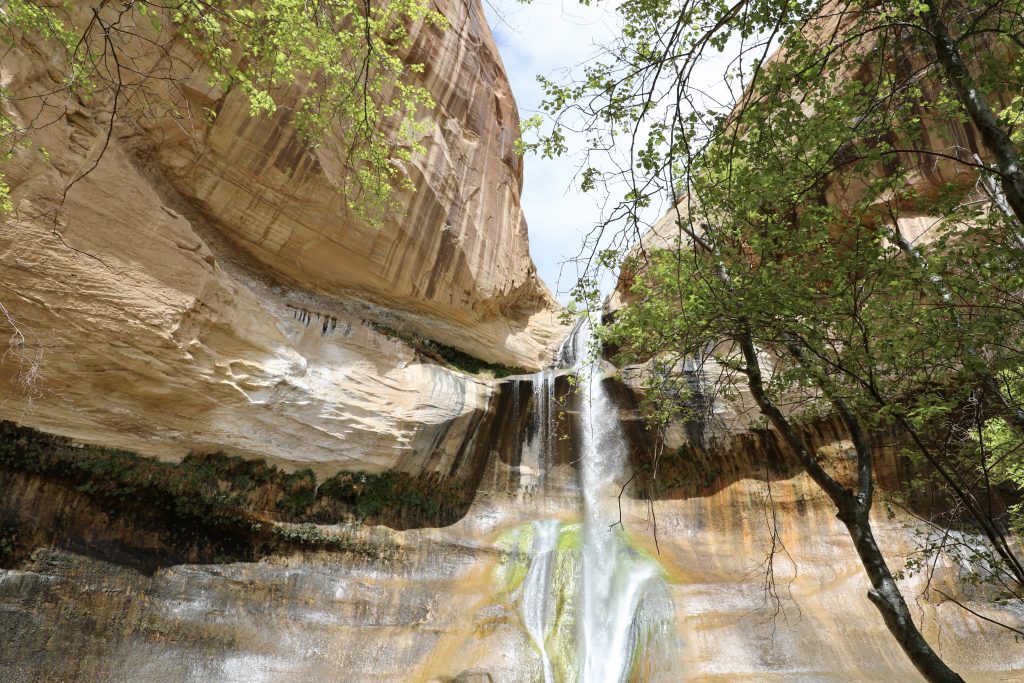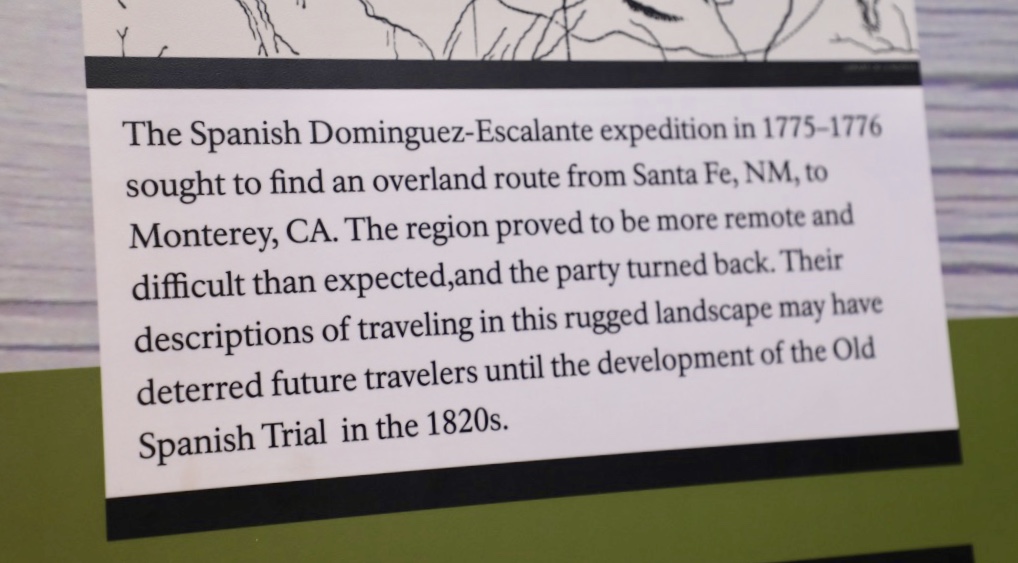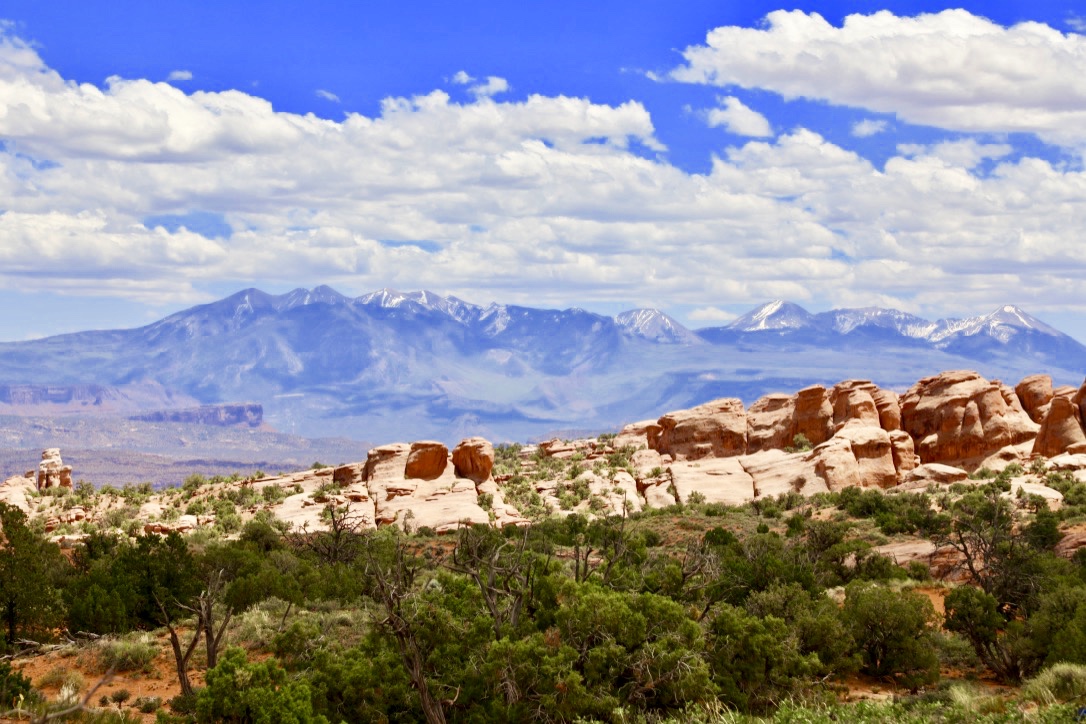
La Sal Mountains, Utah. Elevation over 12,000 feet.
Initially, we planned to leave our visit to Arches National Park to the last day of our vacation, but we arrived early in the Moab area, and seeing only two cars at the park entrance, we changed our minds.
Our Arches tour was a combined walking and driving visit. The summer crowds were already appearing and the park was filling with American visitors, as well as several foreign group tours. Even this early in the day, parking at certain viewpoints and pullouts required a wait. We circumvented the issue by passing up full overlooks in favor of seeing those on the return trip. When we reached Lower Delicate Arch Viewpoint, we zipped into the last space in the parking lot, thanks to an eagle-eyed park ranger who flagged us down.
While I would’ve loved to have hiked Devils Garden Trail, all 7.2 miles of this most difficult and longest of the trails in the park, we stuck to the short hikes—Park Avenue, Windows Trail, Double Arch, Skyline Arch, and Balanced Rock saving the garden for a future visit.
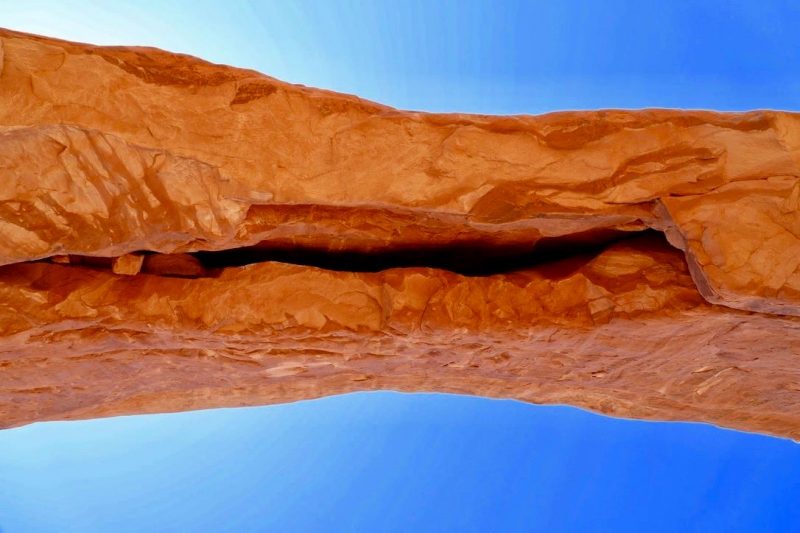
To think this stark, colorful terrain was once completely under water. The park itself lies atop an underground salt bed. Water, ice, extreme temperatures, and underground salt movement have sculpted the landscape, and all are responsible for the arches, spires, balanced rocks, and sandstone fins seen throughout the park.
By late afternoon, the crowds had grown considerably as the Memorial Day weekend approached, the busiest weekend for Utah’s national parks, with Labor Day close behind. We snapped off our last series of photos and dumped our daypacks in the rental, ready for dinner.
We checked into the Best Western Plus Canyonlands Inn and immediately zeroed in on our dinner spot—Arches Thai for “authentic” Thai food. The restaurant does a bustling business, both dining in and taking out, and was a stone’s throw from our hotel. We ordered the crispy duck in a sweet and sour sauce and chicken in yellow curry sauce. Yummy.


